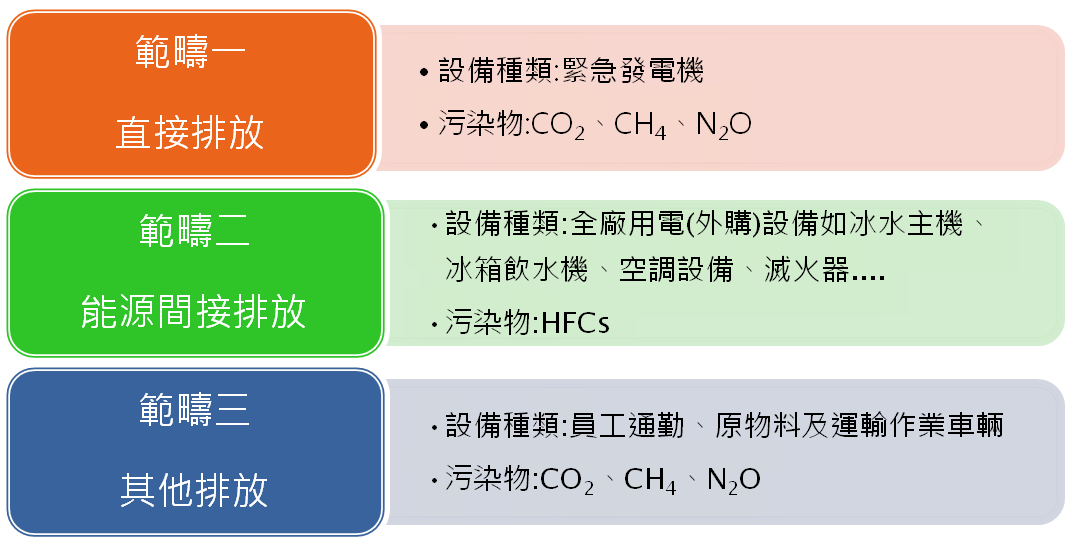Society Responsibility
1.Greenhouse Gas Inventory(ISO 14064)
Global warming and climate change are caused by excessive human use of fossil fuels, such as coal and oil, which produce large amounts of carbon dioxide and other greenhouse gases. Since the 21st century, the most serious anomaly in the global ecosystem has been the rapid deterioration of the environment, among which the most serious is the climate anomaly caused by global warming, which has brought about continuous wind and flood disasters, land desertification and other problems.
Therefore, advanced countries around the world have begun to promote directions and measures to reduce greenhouse gases. In recent years, countries around the world have reached a consensus on greenhouse gas emission control. Thinking Electronic Industrial Co., Ltd. (hereinafter referred to as Thinking) has also promoted greenhouse gas inventory operations since August 2009, established the company's greenhouse gas inventory management system and conducted inventory to understand the actual greenhouse gas emissions, and finally formulated improvement measures to achieve the goal of greenhouse gas reduction.
2.Greenhouse Gas Inventory Process

3.Emission Boundary
Our company follows the ISO 14064:2006 standard for greenhouse gas inventory, reporting, and quantification. Using our organizational boundaries as the scope, we establish boundaries for organizational and operational emissions.

4. Investigation Result
Thinking Electronics has selected 2018 as the baseline year for greenhouse gas investigation and has been conducting annual investigation since 2019 to track emissions accurately. We aim to achieve goals such as resource efficiency, energy conservation, carbon reduction and industrial waste reduction, ultimately moving towards the development of a low-carbon economy and society.
The investigation results show that from 2018 to 2024, the Group’s carbon emission intensity per unit of revenue has decreased by 35%. The main sources of emissions include electricity consumption from plant equipment as well as mobile machinery and vehicles. Accordingly, the carbon reduction plan will focus on: (1) improving equipment efficiency, and (2) promoting energy conservation measures to further reduce greenhouse gas emissions.
In the fiscal year 2024, the total greenhouse gas emissions of our company and its subsidiaries amounted to 53,357.06 metric tons CO2e, mainly from Scope 2 indirect electricity consumption emissions, accounting for approximately 92.05% of the total emissions. The total greenhouse gas emissions for fiscal year 2024 increase by 3,597.06 metric tons CO2e compared to fiscal year 2023. Continuous reduction and emission reduction measures for fiscal year 2024 include upgraded to exhaust ventilation systems, air conditioning chillers & air compressor equipment and energy-saving designs, aiming to achieve ongoing energy-saving and carbon reduction performance.
Furthermore, in response to climate change and to promote sustainable operations, our company will continue to negotiate the purchase of renewable energy and invest in the development of energy-saving products. We aim to achieve the goal of '100% use of green electricity at office locations and 20% of electricity consumption from renewable energy at production facilities' in the future."
Greenhouse gas emissions in the past years: Unit: metric tons CO2e/year
| Year | Scope 1 | Scope 2 | Scope 3 | Total Emissions |
| 2024 | 2,157.25 | 49,115.80 | 2,084.01 | 53,357.06 |
| 2023 | 1,307.98 | 47,089.08 | 1362.45 | 49,759.51 |
| 2022 | 1,145.64 | 51,839.59 | 2767.98 | 55,753.21 |
| 2021 | 1,185.57 | 58,975.34 | 3,434.91 | 63,595.81 |
| 2020 | 4,765.43 | 58,287.27 | 2,276.50 | 65,329.20 |
| 2019 | 5,521.76 | 54,284.59 | 2,700.73 | 62,507.08 |
| 2018 | 2,330.48 | 60,744.28 | 3,005.06 | 66,079.83 |
